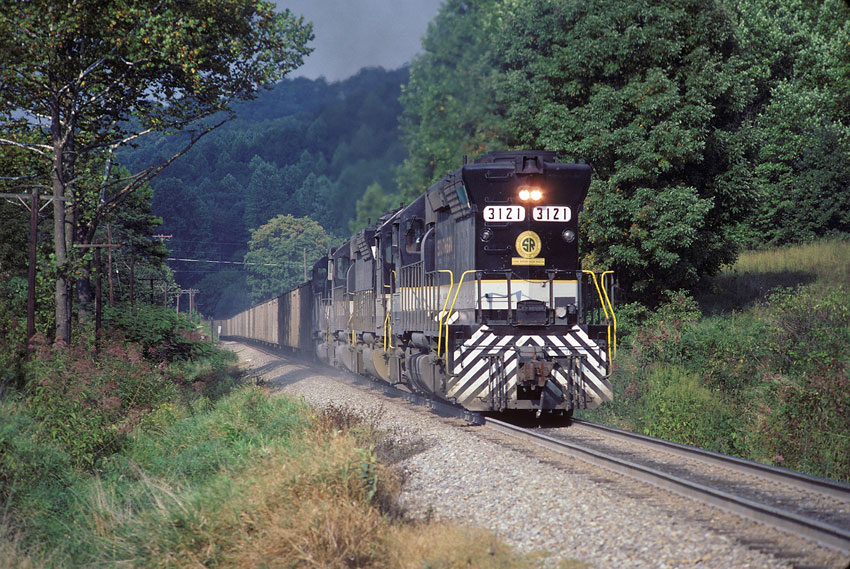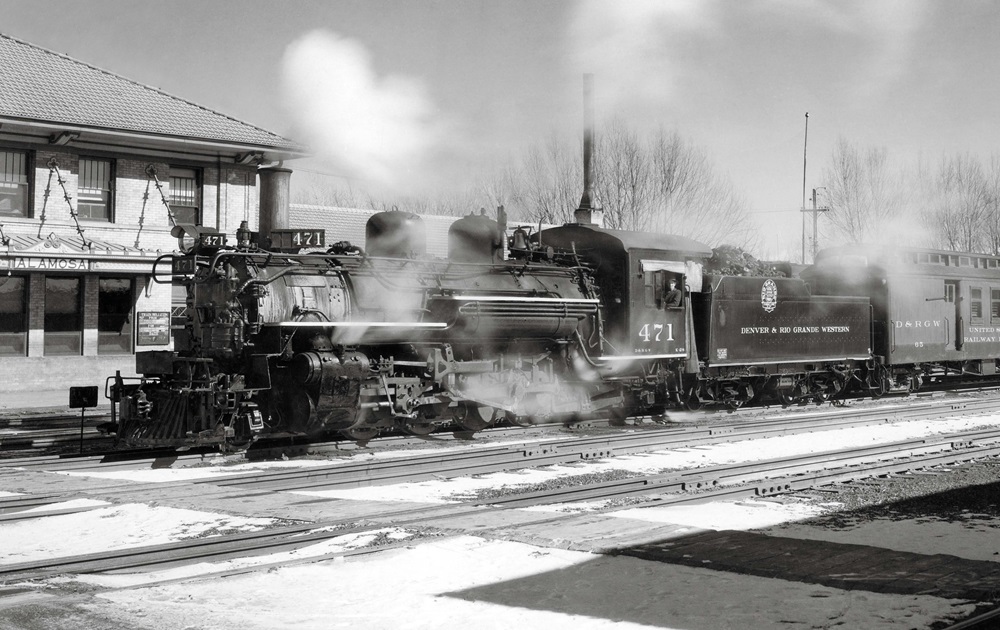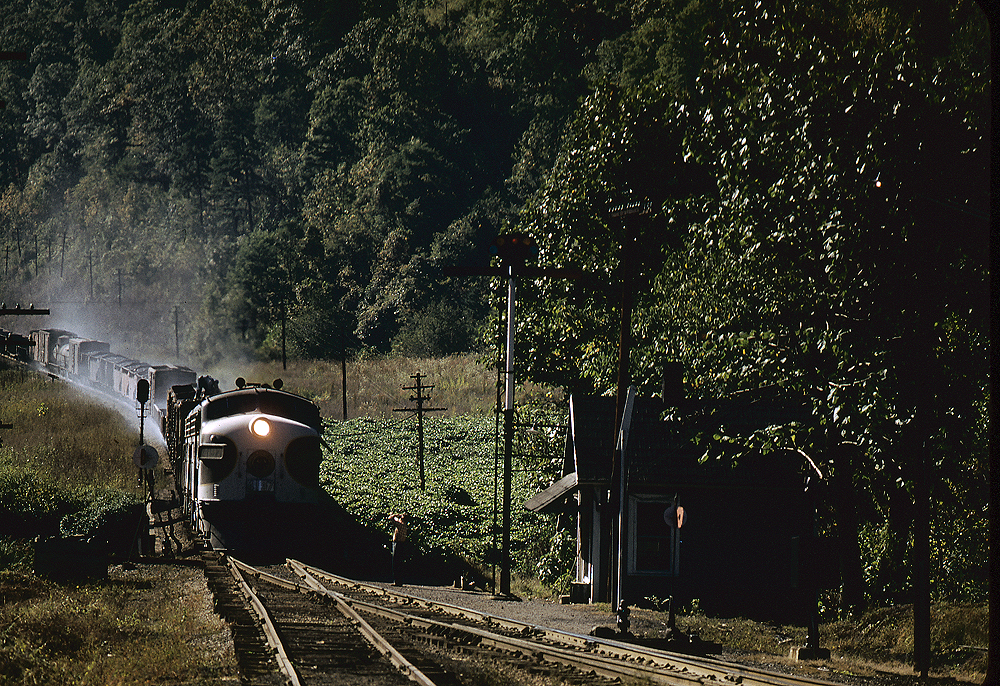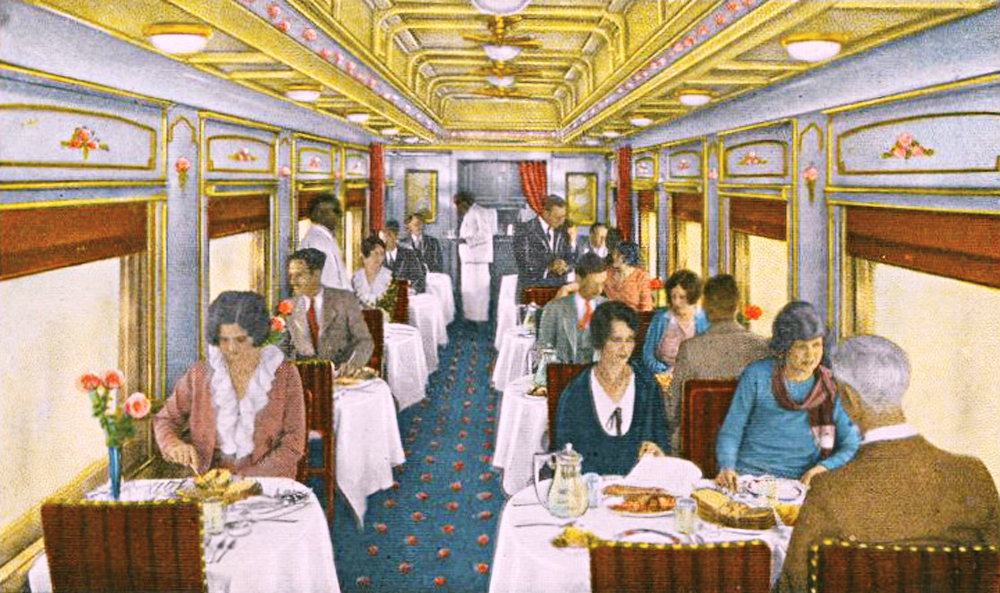— Brian Christenson, Bucyrus, Ohio
A It’s a common misconception that both Norfolk & Western and Southern Railway (and for a while, successor Norfolk Southern) operated many of their hood units long hood forward for better crew safety in the event of a collision. While that might have been a secondary benefit, the real reason was bidirectional operation capability.
From the acquisition of its first diesel-electric locomotives in late 1955 (both EMD GP9s and Alco RS3s), the N&W’s units were equipped with dual controls, so they could be operated in either direction with the engineer on the traditional right-hand side. Line-side signals, for example, were almost always on the right side of the track, so having the engineer there was an optimum situation. The N&W operated many coalfield “shifters,” where bidirectional diesel operation was ideal — and much better than in the days of steam, when the big Mallets had to find a wye if they needed to reverse direction. Otherwise, an engineer (and fireman) would have to assume an awkward sitting position in the cab on long reverse moves, with the engine’s throttle, reverser, air brake handles, and other controls actually behind him.
The Southern’s approach to bidirectional operation was simpler: Make the short end of the unit the rear, delete the optional low nose, and have the engineer on the right-hand side with the long hood leading. In the event the unit was running in “reverse,” the engineer would be on the left side, but with a short hood, so his forward vision to the right side of the track wasn’t impaired all that much. While new power in this configuration didn’t arrive until the SD45s of 1967, earlier units (SD24s, GP30s and GP35s) all came with high short hoods, but set up as the short hood end as the “front.”
In both cases, the carriers hoped to eliminate terminal expense and delay from turning units on turntables or wyes. In truth, crews on both roads never received the practice warmly.
The last road units N&W purchased came with conventional low-nose short hoods set up as the “front,” and without dual controls. For a time after the NS merger, new units were purchased under the Southern philosophy of long hood forward, but with low-nose short hoods. The advent of “comfort cab” units made such operating practices impractical, so it’s now rare to find a vintage N&W or Southern unit running long hood forward.
— Ron Flanary, frequent TRAINS contributor and former Southern Railway employee














The only thing that I didn’t like about running an engine long nose forward was the fact that the visibility is cut in half. and when on an opposite curve to the engineer’s side, at times you can’t even see the rail in front of you. One evening about 7:25 pm on a September 28 evening, I was running long nose forward in a GP-38 on the Conemaugh line at Harmarville PA. and struck a person who was walking along side the track but not far enough away to clear. Had I known he was there, the whistle would have saved his life.
Also the DL&WRR.